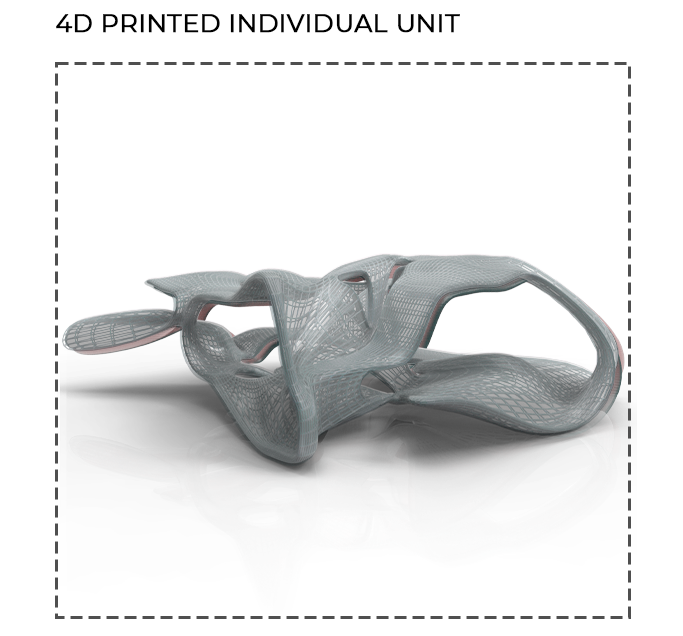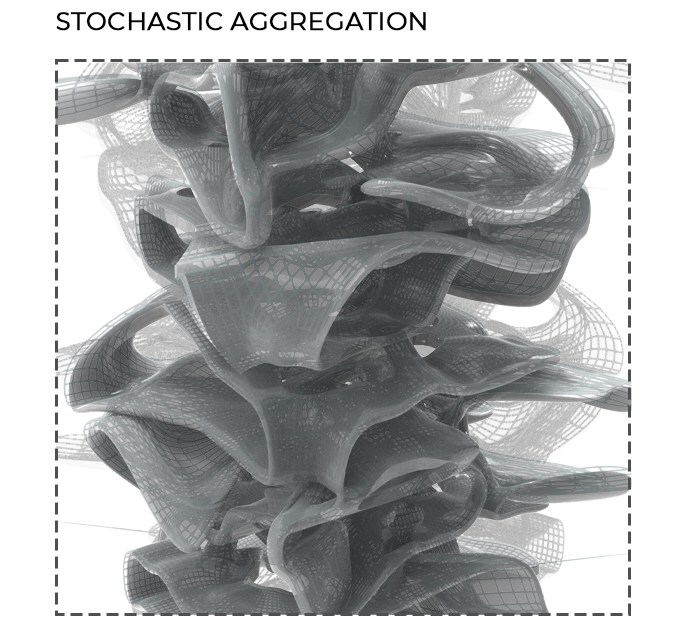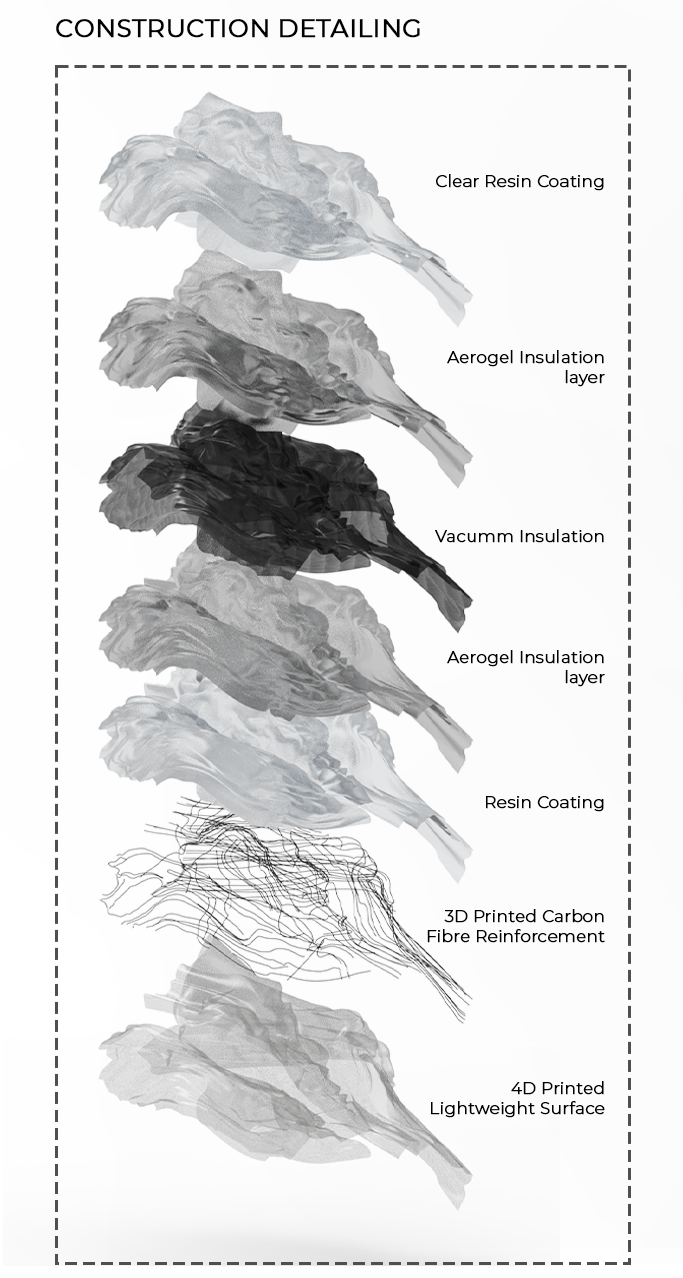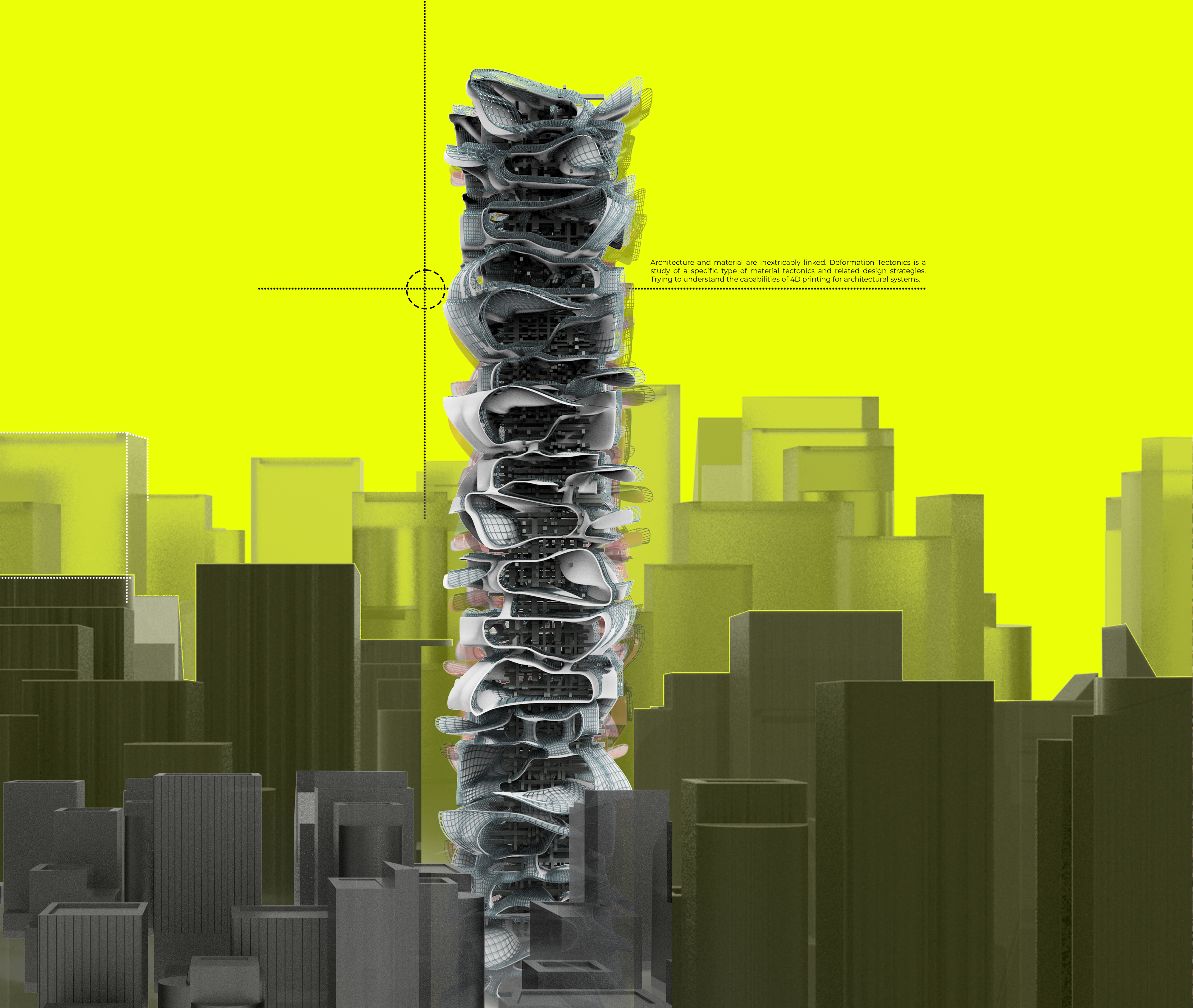
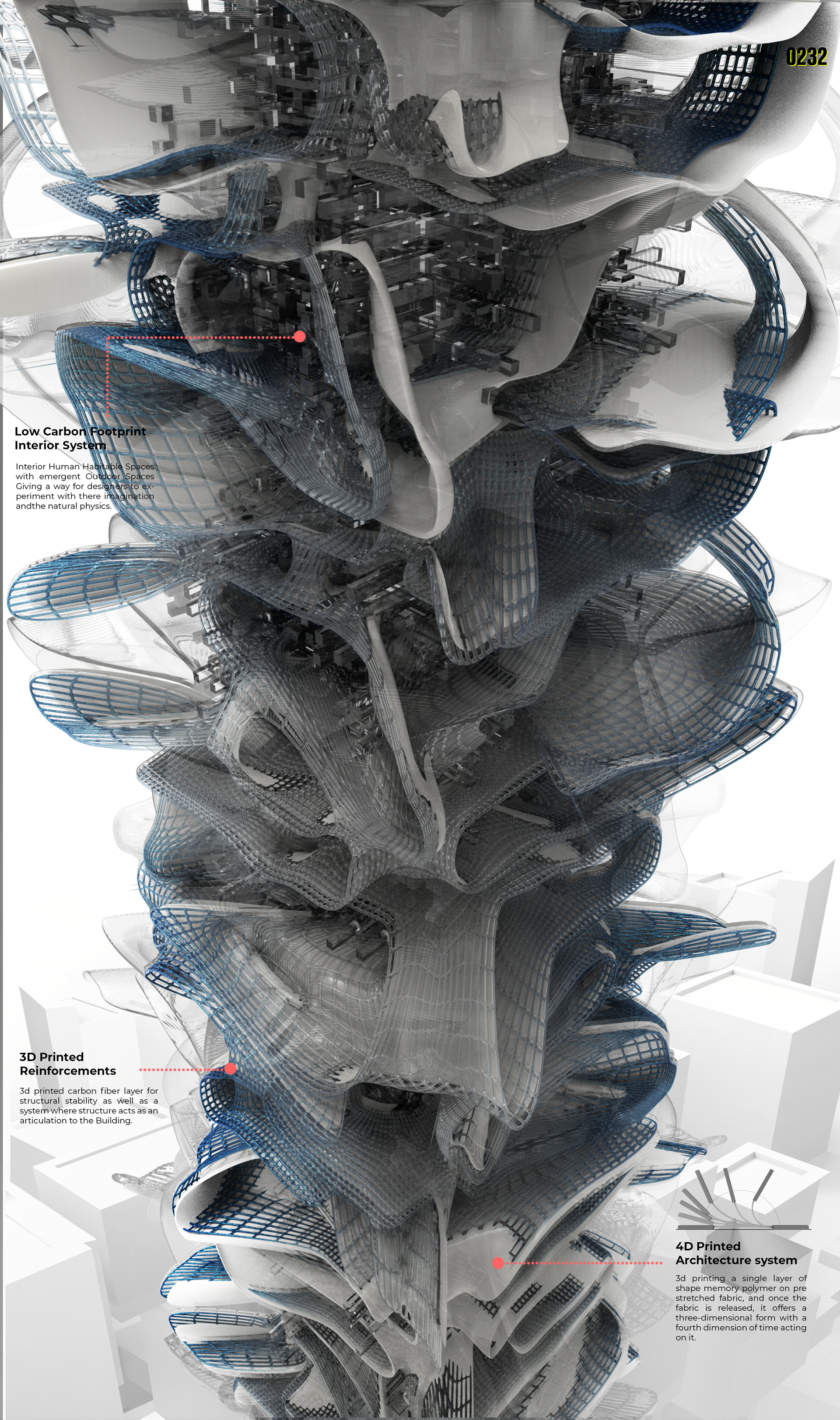
Typology: Skyscraper Design (International Competition)
Project: Evolo Skyscraper 2022 - Discrete Aggregation
Stage Involvement: Concept Design
Software: 3D Modelling (Rhino 3D/Grasshopper), Sub-D modeling, Wasp, Photoshop, Indesign
Project Brief: This project is a reflection of an architect attempting to capture the spontaneity and emergent behavior of materials science and fabrication techniques. My study focuses on Digital Matter and Intelligent Constructions focusing on tension acting at the intersection of two composite materials and their capacity to transform into self-supporting and self-adapting surfaces when a system of patterns from various materials is implanted on them.
The asymmetries are made possible by architecture. Despite the tremendous precarity of the capitalist market, the discipline has yet to endeavor to reinvent its fundamental aspects that sustain such logic. Building blocks such as slabs, columns, and beams are designed, planned, built, and built utilizing procedures that haven't altered much since the industrial revolution. Certainly, the growth of parametric software, in addition to programming, big data, machine learning, artificial intelligence, augmented and virtual reality, and so on, has had a massive influence on architectural conceptions. Even though there has been an increase in complex architectural forms in recent years due to computational and parametric design methodologies, these complex geometries are generally expensive, need a lot of frameworks, and specialized labor, and all of the articulation comes down to panelization.
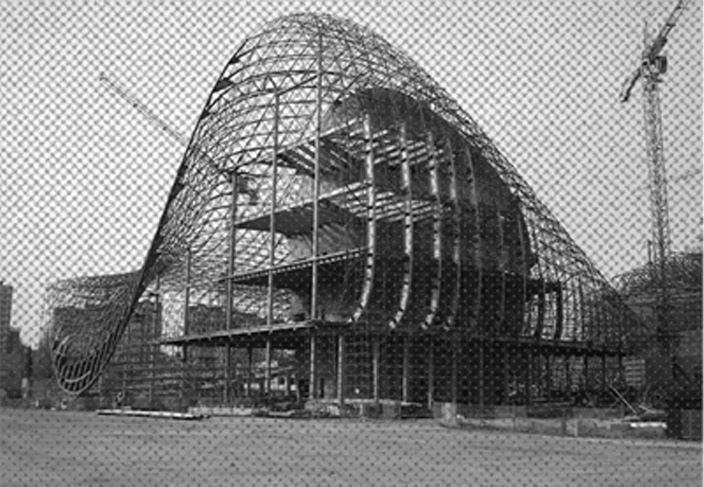
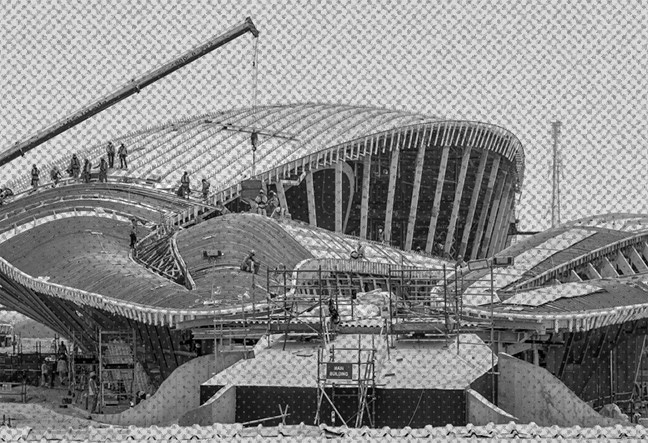

Despite rising digitalization in nearly every other industry, construction is one of the least affected. This is most evident when one considers construction productivity levels, or value added per worker, which has been static since the mid-twentieth century. Buildings are also frequently realized using a project delivery framework known as "design-bid-build," which is extremely fragmented and depends on the exact coordination of a highly striated workforce of contractors, sub-contractors, and even sub-sub-contractors.

Design Overview: Discrete architecture aims to be the first step in leveraging automation to challenge the biases and privileges inherited by and inherent in the built environment disciplines. There are significant social, economic, and political implications to how we design, construct and assemble buildings, and some assumptions implicit in contemporary rhetoric on socioeconomic and technical growth may need to be challenged in order to rearticulate the power relations perpetuated by our cities. The different dynamics and players at work in the automation of the built environment must be confronted more carefully and with less naiveté.

